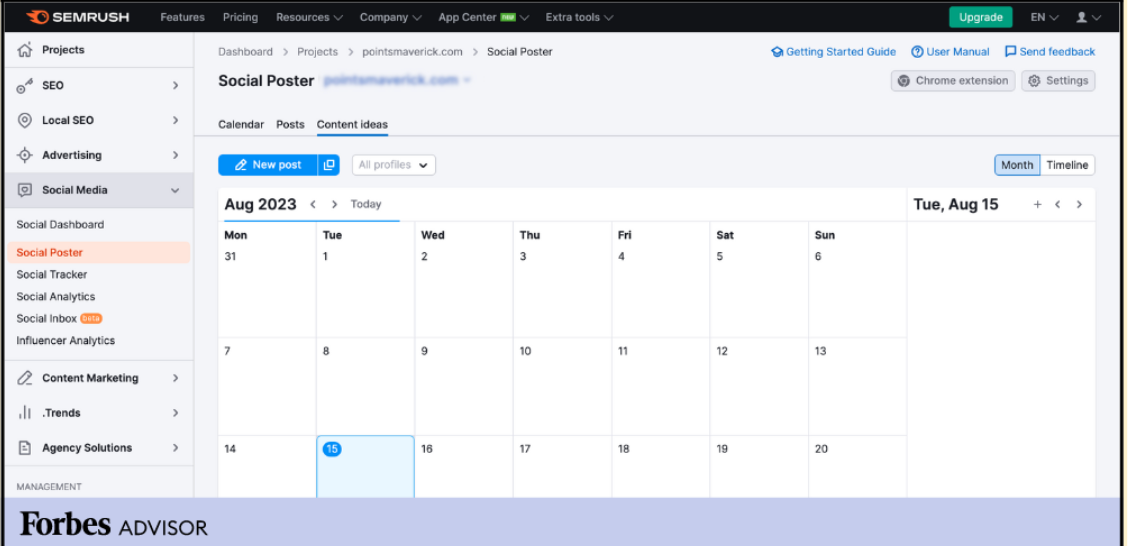As an all-in-one SEO suite, Semrush has a large feature set that encompasses nearly everything and anything SEO. Its core feature set includes its comprehensive keyword research tool where users can gain insights into the best opportunities to position their websites to rank in search. On top of that, it also has content marketing tools, market research tools, advertising tools such as paid keyword research insights, and social media marketing tools.
Here are the main features of Semrush at a glance:
- SEO
- Content Marketing
- Market Research
- Advertising
- Social Media
SEO
Semrush casts a wide net when it comes to SEO to help ensure that you have the tools you need to improve your site’s ranking. There are four core SEO categories, which include keyword research, competitive research, link build and on-page and technical SEO.
Keyword Research
Using the keyword research tool, you can discover popular search terms and identify the best opportunities to rank. You can also manage your target keywords, track keyword rankings and gain organic traffic insights. Upon searching for a keyword, Semrush provides a vast amount of information about the keyword, such as search volume by location, user intent, common variations of the same keyword, a list of sites that rank for this keyword, questions related to this keyword and the estimated cost per click when bidding on this keyword in paid search.
Competitive Research
With the competitive research tool, you can get insights into what your competition is doing—and better, what is working for them. For example, you can view website traffic by country, see how much traffic is organic versus paid, view its number of backlinks, see its top keywords for both organic and paid, and see how its performance compares to its top competitors.
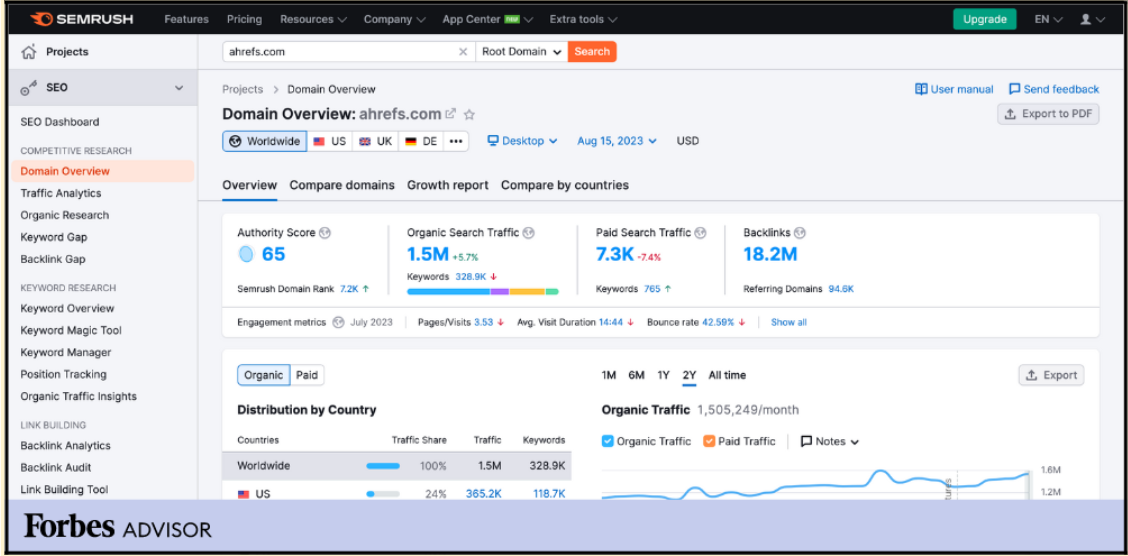
Link Building
The link-building tool helps you identify linking opportunities. To get set up, you will need to input your URL, your target keywords and your top competitors. With that, Semrush will provide a list of link opportunities, and the ability to add those you are interested in building links with to a list of prospects in progress for easy tracking.
Keep in mind that while Semrush will help you streamline the process of finding link-building opportunities, you still need to contact each site manually in an effort to actually earn links. So while it does some legwork for you, it does not do all of the heavy lifting involved with building links.
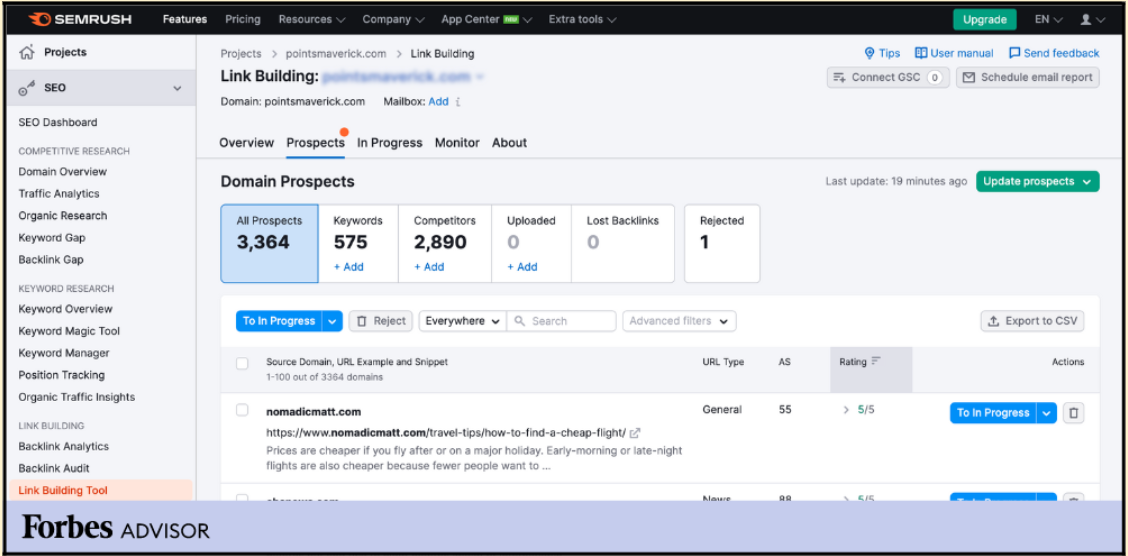
On-Page and Technical SEO
Last but not least, the on-page and technical SEO tool helps you better design your web pages for search. This includes a site audit where Semrush crawls the pages of your site and provides insights such as website health, errors, site performance and core web vitals. It also has an on-page SEO checker, an SEO content template to help you build out content that ranks, a log file analyzer and listing management.
While the information Semrush provides can be insightful, it’s not necessarily actionable if you lack SEO knowledge and technical expertise. That said, the site audit is a good way to quickly identify issues with your site. However, it does not necessarily provide actionable insights for users to make meaningful changes.
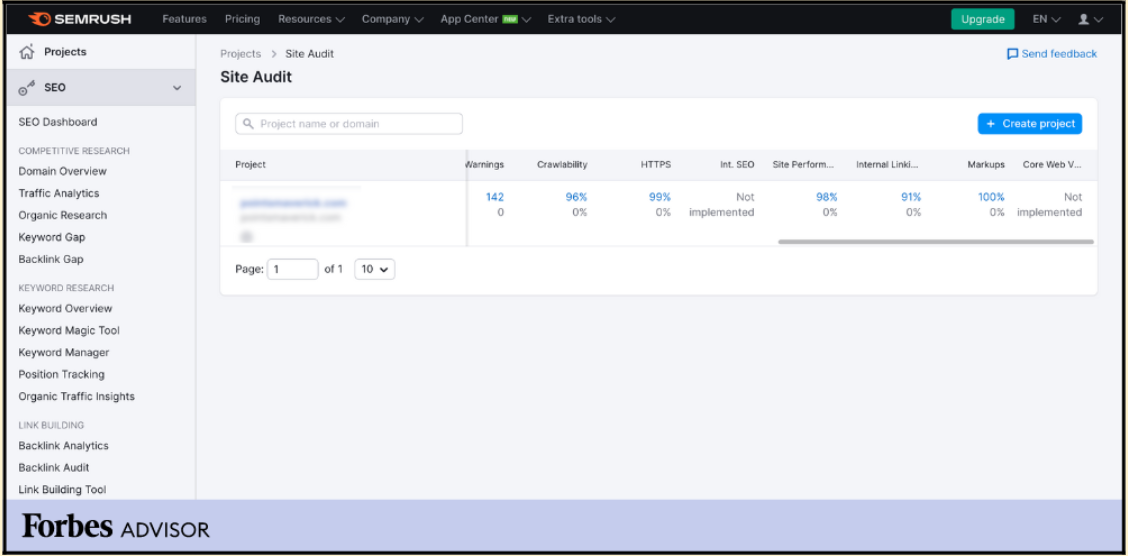
Content Marketing
Semrush’s content marketing features uniquely give users the ability to search for keywords and get related content ideas. This could be a helpful tool for businesses that know which keywords they want to target, but are struggling to come up with related content that would help their site get found in search. It also has an SEO writing assistant to then help users craft content around their chosen topic as well as a template to help keep users on track while writing.
These features are not particularly useful to those with content marketing and writing experience. However, it could be a helpful tool for those who do not.
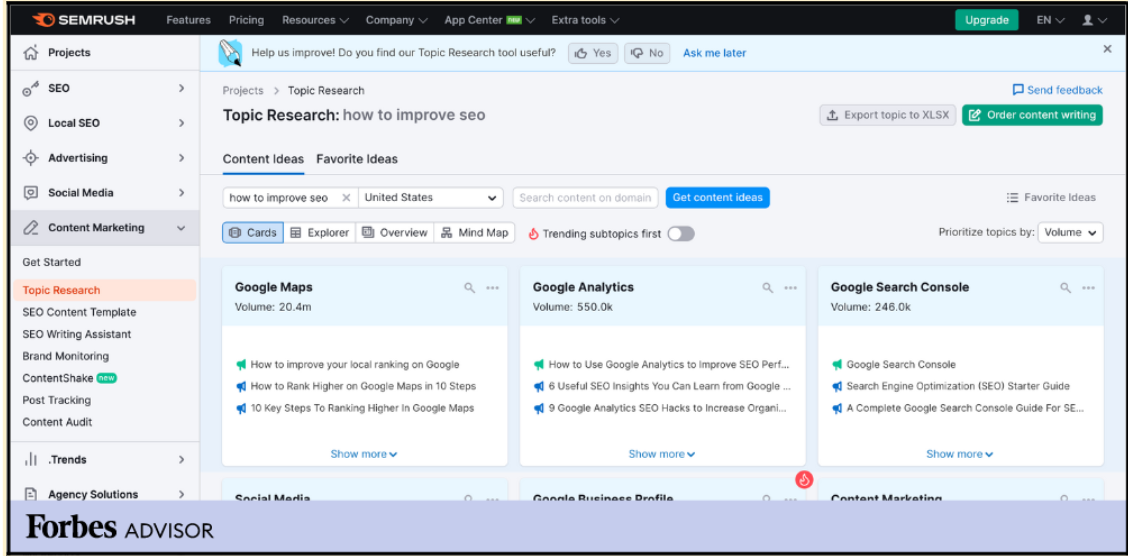
Market Research
Semrush offers a variety of different market research tools. This includes competitive analysis, market analysis, paid advertising and PR monitoring. Using these tools, businesses can gain insights into their competition such as the keywords they are ranking for and buying ads for, how much traffic their site has and their social media presence and mentions. These insights can be helpful, but they do not necessarily help a business directly improve its SEO.
Advertising
The advertising component offers a range of features to help businesses understand what their competitors are doing and how their ads are performing. It has tools for both paid search (e.g., Google Ads) and paid social advertising (e.g., Facebook Ads). While the performance insights are convenient to have, it’s not as though each ad platform doesn’t offer comprehensive analytics and performance insights. However, where it stands out is its ability to help users discover the best keywords to target for their ads.
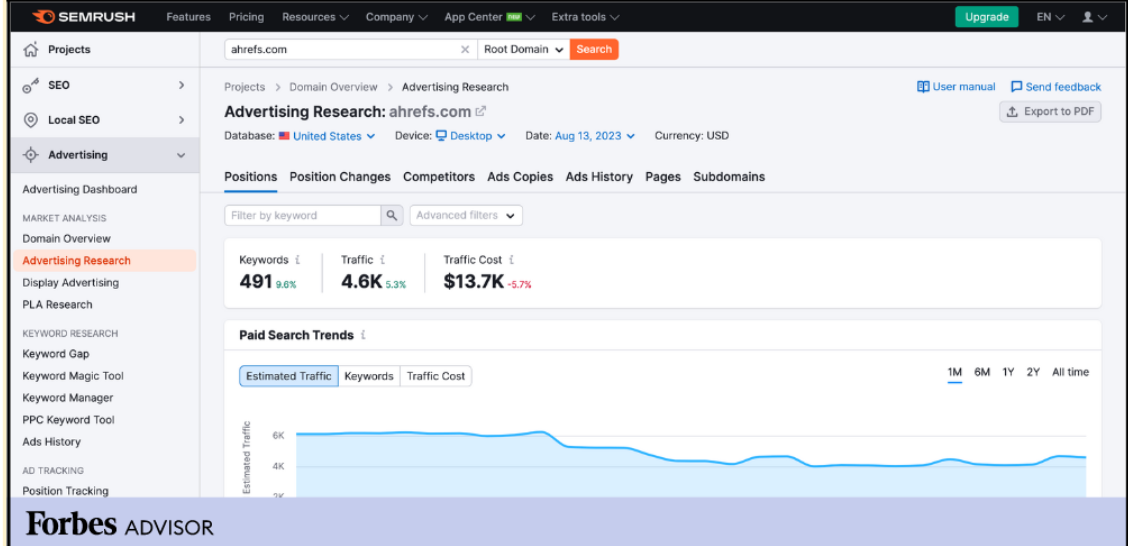
Social Media
Semrush connects with most of the major social media platforms, such as Facebook, Instagram, Twitter, LinkedIn, Pinterest and Google Business Profile. Users can manage their social media calendar, track social media posts and view social performance and analytics. Its social media features are helpful for businesses that passively employ social media marketing. However, it’s likely not overly suitable for businesses that rely heavily on social media marketing.
